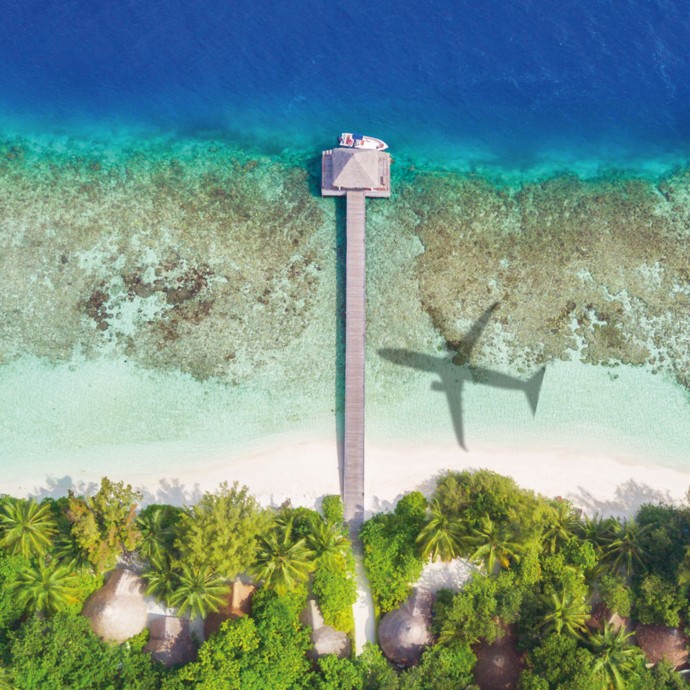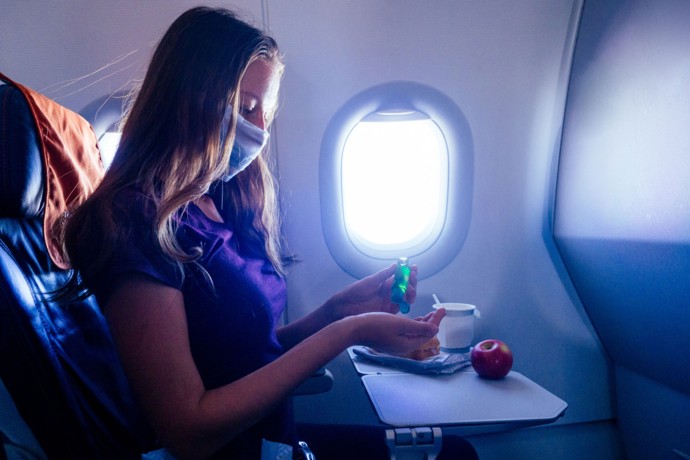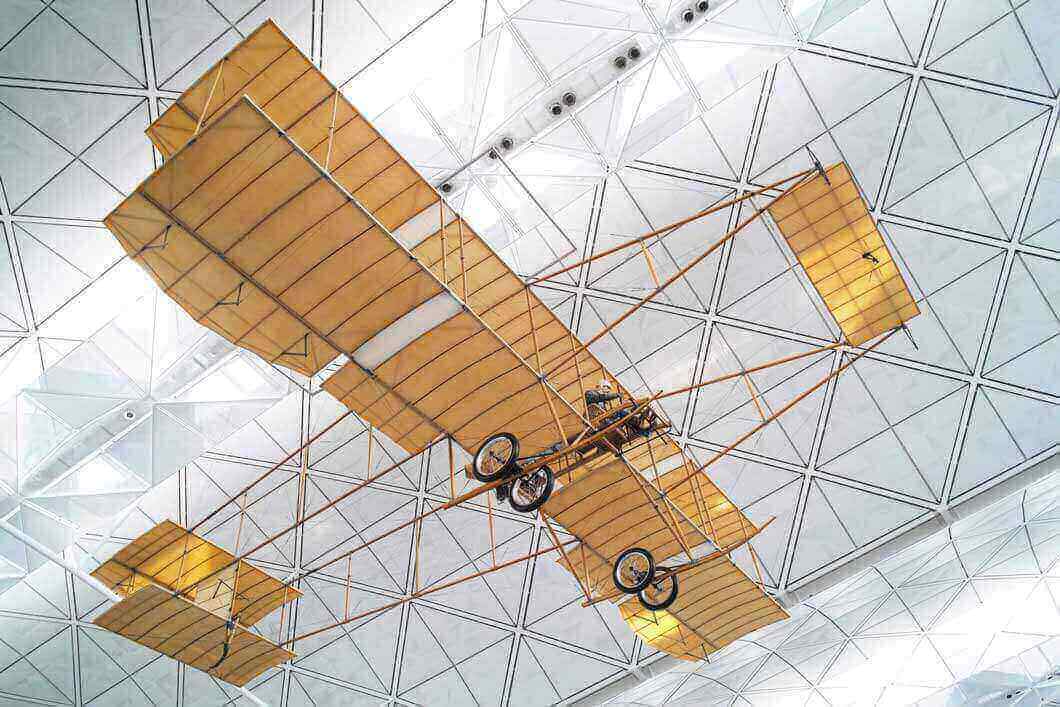Hygiene and prevention measures to control the transmission of COVID-19 in aircraft cabins
02.06.2021
The COVID-19 pandemic has put the aviation industry in one of its biggest crises [1]. A majority of countries imposed travel restrictions to control the spread of COVID-19, resulting in a significant decrease in tourist travel. Currently, according to the World Tourism Organisation (UNWTO), 32% of destinations around the world are completely closed to international tourism.
Economic impact on air transport and tourism
Air transport enables global supply chains and jobs in tourism. At least 65.5 million jobs and 3.6% of global economic activity are supported by our industry [2, 3]. In fact, in 2019, some 4.5 billion people worldwide were transported by airlines, immensely connecting cities and businesses [4]. In the early 2020s, most countries imposed travel restrictions to contain the spread of COVID-19, resulting in a significant decline in tourism. While the situation improved moderately by the end of the year, a negative COVID-19 test became a necessity to cross borders [5]. In March, according to the World Tourism Organization (UNWTO), 32 % of destinations around the world were completely closed to international tourism [6].

Infectious disease prevention
Despite the increasing understanding of the effectiveness of public health measures, advances in testing technologies and the introduction of vaccines, the emergence of new SARS-CoV-2 variants has led to the need for airlines to take some precautions to limit the transmission of COVID-19 during air travel [7]. As for vaccination, there is no doubt that it remains one of the most effective ways to prevent infectious diseases. It reduces the risk of getting infected by stimulating our immune system to develop antibodies against pathogens [8, 9].
Vaccination is expected to contribute to the recovery of international tourism [5, 10]. COVID-19 vaccines would also cover new mutations of the virus, should they occur. Dr Robert Bollinger, Professor of Infectious Diseases at the Johns Hopkins University (JHU) School of Medicine states, among other things:
We deal with mutations in the flu virus every year and we'll be keeping an eye on and tracking the coronavirus as well. If there is ever a major mutation, the vaccine development process can be adjusted as needed [11].
Dr. Robert Bollinger, Professor of Infectious Diseases at the Johns Hopkins University (JHU) School of Medicine
Effective measures for travellers in aircraft cabins
Recent research at the Harvard T.H. Chan School of Public Health has shown that the risk of COVID-19 spreading on board is low due to the comprehensive measures taken by airlines [12]. Cabin air is filtered using HEPA (High Efficiency Particulate Air) filters, as in hospitals [13]. In addition, airlines have established strict rules that follow WHO recommendations, such as social distance and wearing masks [16]. Nevertheless, transmission of infection can occur between people sitting in close proximity to each other. This can occur through direct contact with an infected passenger who has coughed or sneezed without covering their mouth and nose, or through indirect contact, e.g. by touching the armrest [16, 17].
To minimise the risk of transmitting a contagious disease, anyone planning to travel should postpone their flight if they feel unwell [18]. Most airlines require a screening test before the flight. This way, even those with an asymptomatic course of the disease can be detected. As a general rule, passengers and crew members with a positive test result are not allowed to travel by air until they have recovered [17].

Disinfection
Another preventive method used by many airlines is cabin disinfection. Nowadays, several disinfection methods are already mandatory in some countries, especially if the flight is coming from an area with a high prevalence of communicable diseases such as malaria and yellow fever. These methods include: Spraying before boarding, just before take-off and before landing.
Conclusion
In summary, the results of most studies regarding the transmission of COVID-19 on aircraft are consistent with the results of the SARS-CoV1 studies. The SARS-CoV1 studies showed that during the 2003 outbreak, transmission of the infection on aircraft was extremely low due to preventive measures taken within the aircraft [22-24]. Nevertheless, airlines are urged to remain vigilant, use new methods and continue to conduct regular public education and awareness campaigns about COVID-19.
[1] Gostin LO, Wiley LF. Governmental public health powers during the COVID-19 pandemic: stay-at-home orders, business closures, and travel restrictions. Jama. 2020;323(21):2137-8.
[2] Air transport supports 65.5 million jobs and $2.7 trillion in economic activity [Internet]. 2018 [cited 27 March 2021]. Available from: https://www.iata.org/en/pressroom/pr/2018-10-02-01/.
[3] Aviation: Benefits Beyond Borders [Internet]. 2020 [cited 27 March 2021]. Available from: https://aviationbenefits.org/downloads/aviationbenefits-beyond-borders-2020/.
[4] Air Transport Action Group - 2020 Facts-Figures [Internet]. 2020 [cited 27 March 2021]. Available from: https://www.atag.org/facts-figures.html.
[5] COVID - 19 Related Travel Restrictions: a Global Review for Tourism [Internet]. 2021 [cited 27 March 2021].
[6] Tightened Travel Restrictions Underline Current Challenges for Tourism [Internet]. 2021 [cited 27 March 2021]. Available from: https://www.unwto.org/news/tightened-travelrestrictions-underline-current-challenges-for-tourism.
[7] Alshahrani NZ, Alshahrani SM, Alshahrani AM, Leggat PA, Rashid H. Compliance of the Gulf Cooperation Council airlines with COVID-19 mitigation measures. Journal of travel medicine. 2020.
[8] How do vaccines work? [Internet]. 2020 [cited 27 March 2021]. Available from: https://www.who.int/news-room/featurestories/detail/how-do-vaccines-work.
[9] Andre FE, Booy R, Bock HL, Clemens J, Datta SK, John TJ, et al. Vaccination greatly reduces disease, disability, death and inequity worldwide. Bulletin of the World health organization. 2008;86:140-6.
[10] Alshahrani NZ, Alshahrani SM, Fussi N, Alsheef MJ. Should Travellers have Priorities for COVID 19 Vaccine? Journal of Pharmaceutical Research International. 2021:38- 40.
[11] New Variants of Coronavirus: What You Should Know [Internet]. 2021 [cited 27 March 2021]. Available from: https://www.hopkinsmedicine.org/health/conditions-and-diseases/coronavirus/a-new-strain-of-coronavirus-what-you-should-know
[1] Gostin LO, Wiley LF. Governmental public health powers during the COVID-19 pandemic: stay-at-home orders, business closures, and travel restrictions. Jama. 2020;323(21):2137-8.
[2] Air transport supports 65.5 million jobs and $2.7 trillion in economic activity [Internet]. 2018 [cited 27 March 2021]. Available from: https://www.iata.org/en/pressroom/pr/2018-10-02-01/.
[3] Aviation: Benefits Beyond Borders [Internet]. 2020 [cited 27 March 2021]. Available from: https://aviationbenefits.org/downloads/aviationbenefits-beyond-borders-2020/.
[4] Air Transport Action Group - 2020 Facts-Figures [Internet]. 2020 [cited 27 March 2021]. Available from: https://www.atag.org/facts-figures.html.
[5] COVID - 19 Related Travel Restrictions: a Global Review for Tourism [Internet]. 2021 [cited 27 March 2021].
[6] Tightened Travel Restrictions Underline Current Challenges for Tourism [Internet]. 2021 [cited 27 March 2021]. Available from: https://www.unwto.org/news/tightened-travelrestrictions-underline-current-challenges-for-tourism.
[7] Alshahrani NZ, Alshahrani SM, Alshahrani AM, Leggat PA, Rashid H. Compliance of the Gulf Cooperation Council airlines with COVID-19 mitigation measures. Journal of travel medicine. 2020.
[8] How do vaccines work? [Internet]. 2020 [cited 27 March 2021]. Available from: https://www.who.int/news-room/featurestories/detail/how-do-vaccines-work.
[9] Andre FE, Booy R, Bock HL, Clemens J, Datta SK, John TJ, et al. Vaccination greatly reduces disease, disability, death and inequity worldwide. Bulletin of the World health organization. 2008;86:140-6.
[10] Alshahrani NZ, Alshahrani SM, Fussi N, Alsheef MJ. Should Travellers have Priorities for COVID 19 Vaccine? Journal of Pharmaceutical Research International. 2021:38- 40.
[11] New Variants of Coronavirus: What You Should Know [Internet]. 2021 [cited 27 March 2021]. Available from: https://www.hopkinsmedicine.org/health/conditions-and-diseases/coronavirus/a-new-strain-of-coronavirus-what-you-should-know
[12] Marcus L. Assessment of Risks of SARS-CoV-2 Transmission During Air Travel and Non-Pharmaceutical Interventions to Reduce Risk, Phase One Report: Gate-to-Gate Travel Onboard Aircraft, Faculty and Scientists at the Harvard TH Chan School of Public Health. Faculty and Scientists at the Harvard TH Chan School of Public Health . . . ; 2020.
[13] Cabin Air Quality [Internet]. 2021 [cited 15 April 2021]. Available from: https://www.iata.org/en/youandiata/travelers/health/cabinair/.
[15]. Council NR. The airliner cabin environment and the health of passengers and crew. 2002. 15. WHO. Tuberculosis and Air Travel: Guidelines for Prevention and Control. 3rd edition. 2008.
[16] Nir-Paz R, Grotto I, Strolov I, Salmon A, Mandelboim M, Mendelson E, et al. Absence of in-flight transmission of SARS-CoV-2 likely due to use of face masks on board. Journal of travel medicine. 2020;27(8):taaa117.
[17] Bielecki M, Patel D, Hinkelbein J, Komorowski M, Kester J, Ebrahim S, et al. Air travel and COVID-19 prevention in the pandemic and peri-pandemic period: A narrative review. Travel medicine and infectious disease. 2021;39:101915-.
[18] Travel During COVID-19 [Internet]. 2021 [cited 27 March 2021]. Available from: https://www.cdc.gov/coronavirus/2019- ncov/travelers/travel-during-covid19.html.
[19] Grout A, Russell RC. Aircraft disinsection: what is the usefulness as a public health measure? Journal of Travel Medicine. 2021;28(2):taaa124.
[20] Organization WH. Aircraft disinsection insecticides: World Health Organization; 2013.
[21] Alshahrani NZ, Fussi, N, Alshaiban H.M., et al. Knowledge, Attitude and Practices of Healthcare Workers regarding Biomedical Waste of COVID-19 in Aseer Region, KSA. International Journal of Pharmaceutical Research. 2021;13(02).
[22] Breugelmans JG, Zucs P, Porten K, Broll S, Niedrig M, Ammon A, et al. SARS transmission and commercial aircraft. Emerging infectious diseases. 2004;10(8):1502.
[23] Wilder-Smith A, Paton NI, Goh KT. Low risk of transmission of severe acute respiratory syndrome on airplanes: the Singapore experience. Trop Med Int Health. 2003;8(11):1035- 7.
[24] Organization WH. Summary of SARS and air travel. Geneva: May 23, 2003.











